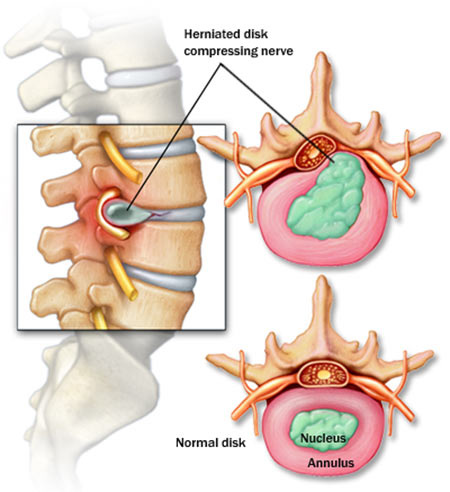Herniated disk
Posted on July 27, 2018 by admin
The spine consists of spinal disks and vertebrae and similar to a jelly donut, the disk has a softer “jelly” center. When the “jelly” pushes out through a tear in the tougher exterior, it is known as a herniated disk. Disk degeneration can cause disk herniation in the lower back or in the neck. The water content in the disks decrease as we get older and the flexibility of it decreases. Therefore, a minor strain, twist, and improper lifting can easily lead to a tear or rupture in the disk.

The signs and symptoms that someone will experience includes pain, numbness, tingling, or muscle weakness due to the irritation on the nerves. Pain can be felt in the thigh and calf when the herniated disk is in the lower back. Pain can be felt in the shoulder and arm when the herniated disk is in the neck.
Excess body weight and duties performed on the job that put extra stress on your lower back can increase the risk of disk herniation. A few things that you can do to prevent a herniated disk includes lifting heavy objects properly, strengthening trunk muscles, and maintaining a healthy weight.